Concrete curbing may be the perfect solution if you’re looking for a quick, easy, and affordable way to add interest and structure to your landscaping project. With an array of possible designs, patterns, and colors available, it’s no wonder why this versatile feature is becoming increasingly popular.
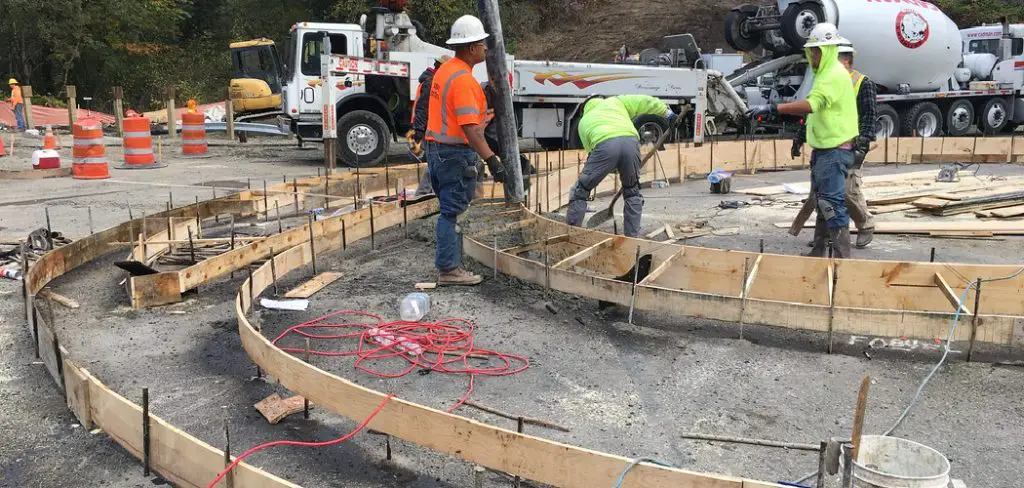
Curbing is a barrier that separates different areas of your landscape. It can be used to edge garden beds, define walkways and driveways, or create borders around flowerbeds or trees. Concrete curbing is a great way to add a touch of elegance and organization to your outdoor space while also providing functional benefits such as preventing soil erosion and keeping mulch in place.
Read our blog post on how to make concrete curbing today to learn all about different types of concrete restraining installation techniques as well as tips on how to tackle this exciting project with success.
What Will You Need?
Before you begin, it’s important to gather all the necessary materials and tools for this project. Here are some of the items that you’ll need:
- Concrete Mix: Look for a blend made explicitly for curbing or with high cement content.
- Water: Make sure to have enough water on hand for mixing the concrete.
- Wheelbarrow or Bucket: This will be used for mixing the concrete.
- Shovel or Trowel: These tools will help with spreading and shaping the concrete.
- Screed Board: A flat, straight piece of wood or metal that will be used to level the concrete.
- Edging Tool: This can be a hand-held or a giant machine to shape the concrete.
- Tape Measure: This will help ensure accurate measurements.
- Spray Bottle: This optional tool can be used to mist the concrete and prevent it from drying out too quickly.
Once you have all of your materials and tools, you’re ready to begin the process of making your own concrete curbing!
10 Easy Steps on How to Make Concrete Curbing
Step 1. Gather Materials
Making concrete curbing requires simple materials, such as concrete mix, gravel, and forms. Having a wheelbarrow, shovels, trowels, and other tools on hand for the project is also helpful. Additionally, it is essential to make sure that the area where the curbing will be installed is level and free from debris.
Step 2. Prepare the Forms
Once all of the materials are gathered, the next step is to prepare the forms for pouring the concrete. The forms should be placed along the desired path of the curbing and secured in place with stakes or other supports. It is crucial to ensure that the forms are level so that when the concrete is poured, it will create an even surface.
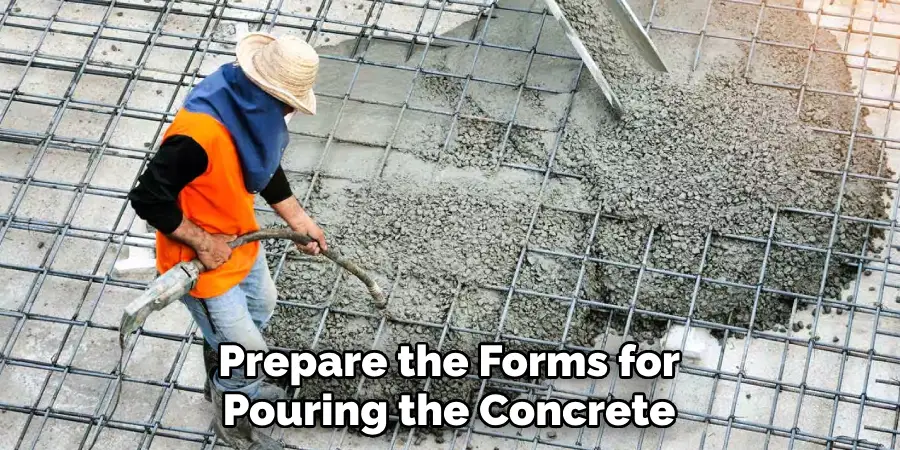
Step 3. Pour and Smooth
The final step in making concrete curbing is to pour and smooth out the concrete mix into the forms. Once run, it can take several hours for the concrete to set completely before it can be removed from its form. After removing it from its form, any necessary finishing touches can be added, such as coloring or texturing with a brush or trowel.
Step 4. Curing the Concrete
Curing is a crucial step in the process of making concrete curbing. Once the concrete has been leveled and finished, allow it to harden and cure for at least 24 to 48 hours. Ensure the concrete is not disturbed during this time to prevent potential damage. An adequately fixed concrete curb is more resilient and can withstand weather changes and physical pressure better.
Step 5. Sealing the Concrete
After the concrete has completely cured, it’s essential to apply a sealant. This provides additional protection to the curb against wear and tear, extreme weather conditions, and stains. Use a quality concrete sealer and carefully follow the manufacturer’s directions.
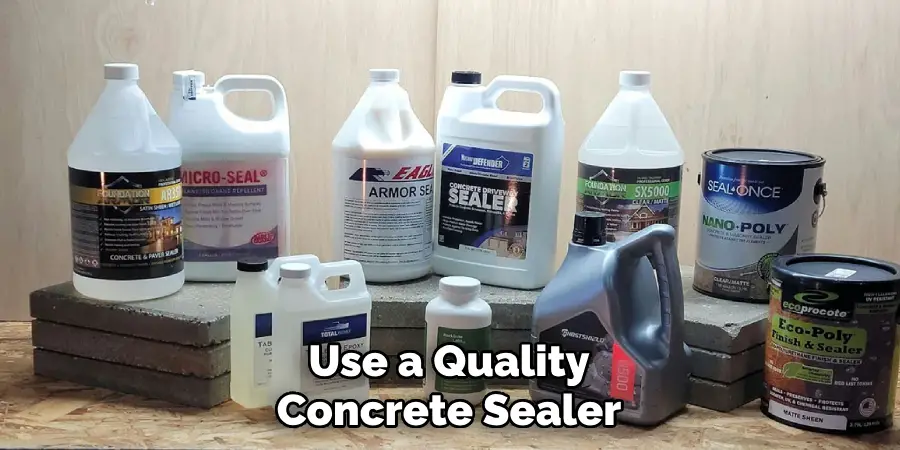
Typically, the sealer is poured into a paint tray, and then applied with a roller or brush over the entire surface of the curb. Allow the sealer to dry for the time specified by the manufacturer before using the curbed area.
Step 6. Maintenance
Keeping your concrete curbing in excellent condition is not overly demanding but requires regular maintenance. Clean the curbs frequently to avoid the dirt, leaves, or other debris accumulation. If any small cracks appear with time, use a concrete patching compound to repair them. Moreover, resealing the curbs every few years helps maintain their appearance and durability, ensuring your landscape looks organized and appealing.
Step 7. Enjoy Your New Concrete Curbing
Once maintenance is complete, you can finally take a step back and admire your work. Concrete curbing enhances the visual appeal of your landscape and adds structure and definition. Whether the curb lines your driveway, garden, or walkway, it provides a clear, neat edge that delineates different areas of your outdoor space.
The project requires effort and patience, but the results are worth it. Enjoy your new functional and decorative addition, and don’t forget to share your experience with others interested in learning to make concrete curbing.
Step 8. Sharing Your Experience
Sharing your experience is an integral part of the process because it helps others learn to make concrete curbing. You can share your insights, tips, and tricks on social media platforms, DIY forums, or personal blog posts. Include photos of the process and the final result to provide a visual guide for those interested in the project. Remember, your experiences, both successes and challenges, can serve as invaluable lessons for others embarking on similar projects.
Step 9. Project Reflection
After the concrete curbing project is completed and you’ve shared your experience, take some time for project reflection. This step involves evaluating the entire process, noting what worked well and could be improved in future projects. Reflect on the challenges encountered and the solutions you devised to overcome them.
This self-assessment is a vital part of learning and growth, and it can be especially beneficial when undertaking similar projects in the future. Also, consider how the new concrete curbing has functionally and aesthetically enhanced your space. All these reflections will contribute to your pool of personal experiences, helping you become more proficient and confident in your DIY endeavors.
Step 10. Further Enhancements and Decorations
At this point, you may wish to consider adding further enhancements or decorations to your concrete curbing. For instance, you might decide to incorporate outdoor landscape lighting, plant flowers or shrubs along the curb, or even paint the curbing to match your home’s exterior.
With some creativity, your curbing can become more than just a functional element – it can transform into an integral part of your overall landscape design. Always remember that any modifications you make should complement the strength and durability of your concrete curbing, ensuring that it continues to serve its primary purpose while boosting the curb appeal of your property.
By following these steps and sharing your experience, you can successfully learn how to make concrete curbing and enhance the beauty and functionality of your outdoor space.
5 Additional Tips and Tricks

- Proper Mixture: Always ensure your concrete mixture is not too wet or dry. An overly damp mixture can weaken the final product, whereas an excessively dry mix can result in a crumbly curb.
- Temperature: Be cautious of the weather. High temperatures can cause the concrete to dry too quickly and shrink, leading to cracks. Meanwhile, freezing temperatures can cause the water in your mixture to expand, leading to cracks.
- Level Surface: To create a smooth and even curb, always ensure that the surface you’re working is level. This prevents the concrete from shifting or tilting.
- Curing: Allow sufficient time for the concrete to cure. Rushing the process can result in a weaker curb, prone to damage and cracks. A good rule of thumb is to wait at least 24-48 hours before removing any forms or using the curb.
- Clean Up: Cleaning up after yourself is crucial in ensuring a successful concrete curbing project. Ensure to properly dispose of any leftover materials and tools and wash away any excess concrete. This will prevent it from hardening and becoming difficult to remove later on.
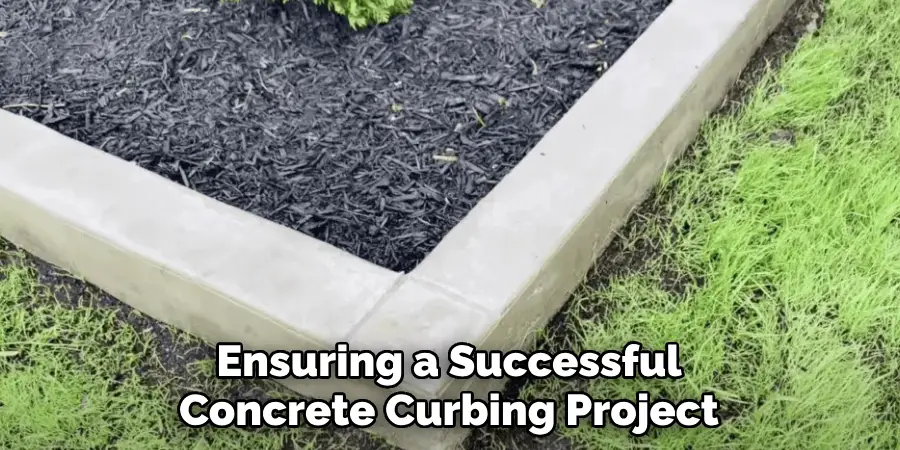
With these additional tips and tricks, you can create professional-looking concrete curbs that will enhance the appearance and functionality of any outdoor space.
5 Things You Should Avoid
- Ignoring Safety Measures: Working with concrete involves certain risks. Avoid neglecting safety precautions such as wearing protective gloves and eyewear and ensuring your work area is well-ventilated.
- Skipping Steps: Each step in making concrete curbing, from the mixture to the curing, is essential. Avoid rushing or cutting steps, as this could compromise the quality of your curb.
- Using Incorrect Tools: Using the right tools is crucial for a successful concrete curbing project. Avoid using damaged or incorrect tools, which could affect the outcome.
- Neglecting Maintenance: Once the concrete curb is installed, it requires regular maintenance to keep it in good shape. Avoid ignoring cracks, discoloration, or other signs of wear and tear that might appear over time.
- Disregarding Aesthetics: While the primary purpose of a concrete curb is functional, it can also add to the visual appeal of your outdoor space. Avoid breaking the aesthetics when designing and installing your curb.
By avoiding these common pitfalls, you can ensure a successful project and enjoy a durable and attractive concrete curb for years.
What Kind of Concrete is Used for Curbing?
Concrete curbing is typically made using cement, sand, and water. The type of cement used can vary depending on the desired strength and durability of the curb. Portland cement is commonly used for residential curbs, while higher-strength mixes may be used for commercial or heavy-duty applications.
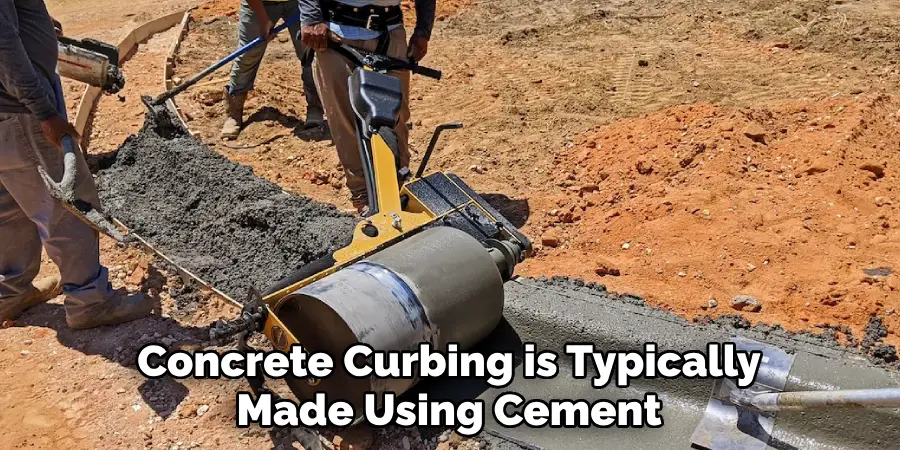
Another important factor to consider is aggregate size. The smaller the aggregate, the smoother the finished curb will be. Larger aggregates can result in a more textured appearance.
It’s important to choose the right type of concrete for your specific project to ensure a long-lasting and strong curb. Consult with a professional or do research to determine the best type of concrete for your needs.
Conclusion
How to make concrete curbing is an excellent project for any DIYer looking to add a unique edge to their home. In order to make sure the job is done suitably, you need to take safety and preparation seriously.
Have the right tools and equipment, know how the concrete should be poured and set, and the proper approach for mixing it.
Once you have mastered these skills, you can tackle more than just concrete curbing!
Now that you know what needs to go into making concrete curbing, are you ready to start on your own? With a little bit of time and effort, you could be one step closer to having a beautifully finished outdoor area that stands out amongst your neighbors!
